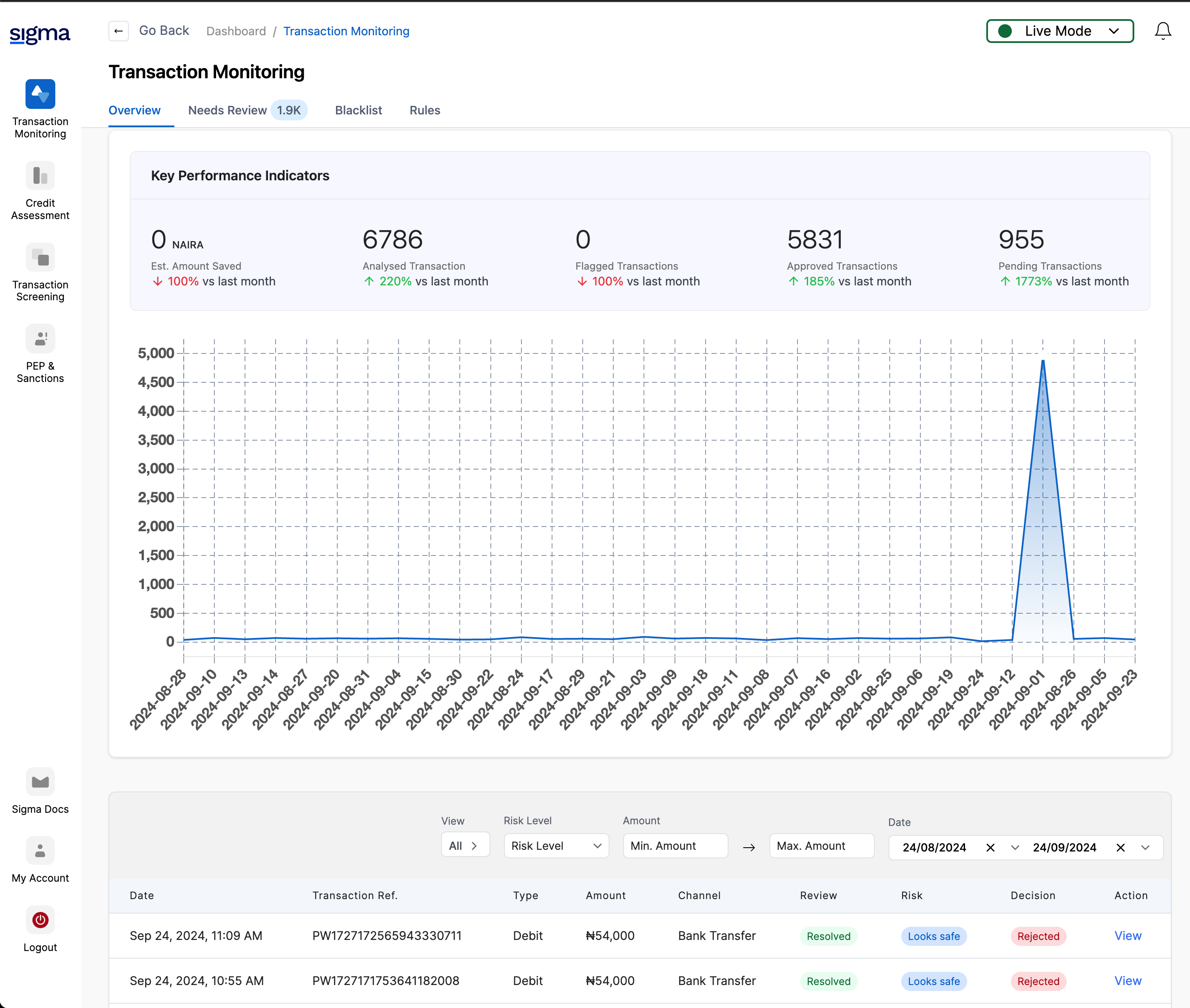Introduction
Transaction Monitoring
Detect and prevent fraudulent activities in your transactions.
This API documentation provides details on how to use the Sigma's transaction monitoring.


Process
The process of transaction monitoring involves several key steps:
Transaction Initiation: A transaction is initiated by a user or system.
Data Collection: Relevant transaction data is collected and sent to the monitoring system.
Real-Time Analysis: The transaction is analyzed in real-time using advanced algorithms to detect any suspicious patterns or anomalies.
Fraud Detection: If any fraudulent activity is detected, the system flags the transaction for further review.
Action: Depending on the severity of the detected fraud, the system can either block the transaction, notify the user, or escalate it to a fraud investigation team.
Reporting: Detailed reports are generated for further analysis and compliance purposes.
How It Works?
- Initiate Transaction:
- You send us transaction(s) details payload. See Submitting Transactions Section
- Analyze Transactions:
- Our sophisticated AI model review the transaction(s) and make informed decisions.
- Rules:
- You can set rule(s) for transaction(s). For example, you may want to automatically reject all transactions crypto related. See Rules Section
- Webhooks:
- After processing your transactions, we analyze the transaction and categorize the transaction based off the risk level and rules, and send you webhooks. See Response Section
Flow
